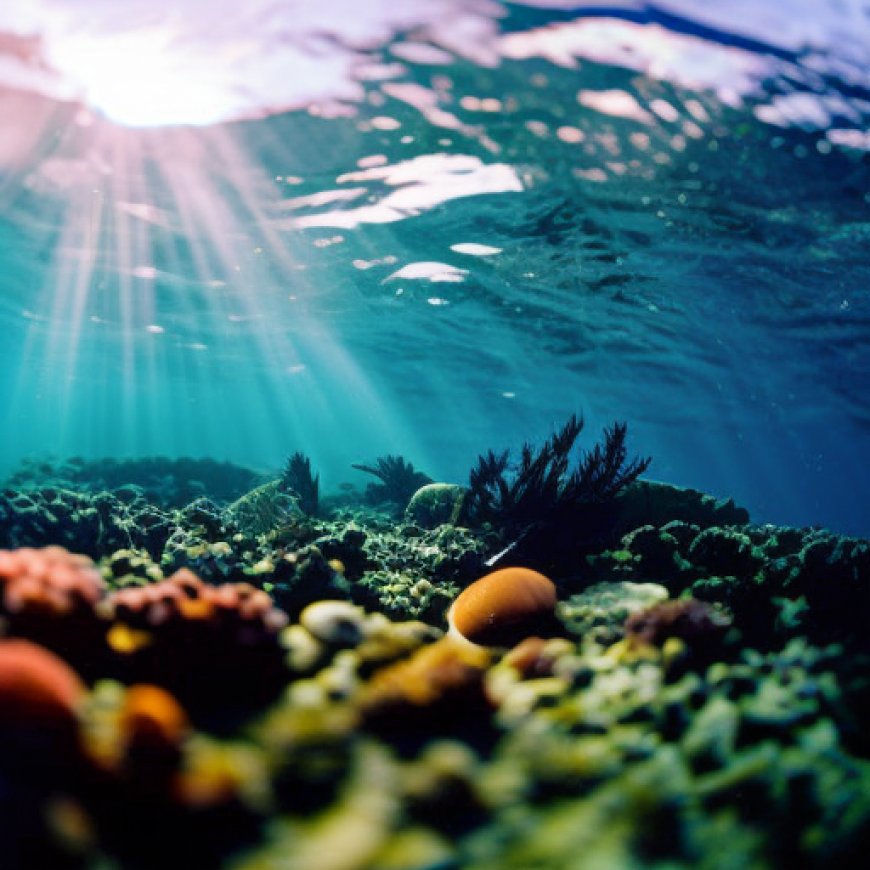Rising saltwater is threatening marine ecosystems – Jacksonville Today
Rising saltwater is threatening marine ecosystems Jacksonville Today


Rising Saltwater is Threatening Marine Ecosystems
Increased salinity in oceans and coastal areas — the result of climate change and poor land use — has potentially devastating effects on coastal and nearby ecosystems, according to a new study.
Impact of Climate Change and Poor Land Use
- Extreme flooding and drought caused by climate change and man-made intrusions
- Rising sea levels pushing saltwater into coastal and low-lying areas
- Damage to seagrass beds
- Harm to the shrimping and fishing industries
- Changes in recreational environments
“These habitats are subject to change,” said Cliff Ross, one of the researchers on the study. “So as the salinity levels change, that’s going to have an impact on the ecosystem and may cause certain habitats like seagrass beds or other type of ecological environments, it may cause them to shift into something else or perhaps even die off.”
Salinity Levels in the St. Johns River
The St. Johns River is also experiencing increases in salinity levels due to sea level rise and river dredging, according to the 2019 State of the River report. This trend continues to raise concerns.
Lisa Rinaman, the St. Johns Riverkeeper, highlights that more saltwater is reaching further upstream, posing threats to inland areas.
Threats to the St. Johns River
- Increased saltwater intrusion
- Presence of barnacles and jellyfish in new areas
- Extreme weather events, such as droughts and excessive water usage
- Loss of freshwater grasses, which serve as the kidneys of the river and important fish habitat
- Pollution issues, including blue-green algae outbreaks
- Reduction in fish habitat
Sustainable Solutions
To mitigate the rising salinity levels in the river, both Cliff Ross and Lisa Rinaman propose the following steps:
- Reduce carbon emissions
- Reduce water usage
- Advocate for policies that protect wetlands
- Advocate for reuniting Silver Springs, the Ocklawaha, and the St. Johns River to restore freshwater flow
Environmentalists have long advocated for the removal of Rodman Dam and the restoration of the natural flow of the Ocklawaha River to offset the harmful effects of dredging and sea level rise. However, opposition from state leaders and local officials remains due to the impact on fishing and tourism.
The next State of the River report, scheduled for release in October, will provide further insights into salinity levels in the St. Johns River.
SDGs, Targets, and Indicators Analysis
1. Which SDGs are addressed or connected to the issues highlighted in the article?
- SDG 14: Life Below Water – This goal focuses on the conservation and sustainable use of oceans, seas, and marine resources.
- SDG 13: Climate Action – This goal addresses the urgent need to combat climate change and its impacts.
- SDG 15: Life on Land – This goal aims to protect, restore, and promote sustainable use of terrestrial ecosystems, including forests, wetlands, and biodiversity.
2. What specific targets under those SDGs can be identified based on the article’s content?
- SDG 14.2: By 2020, sustainably manage and protect marine and coastal ecosystems to avoid significant adverse impacts, including by strengthening their resilience and take action for their restoration in order to achieve healthy and productive oceans.
- SDG 13.1: Strengthen resilience and adaptive capacity to climate-related hazards and natural disasters in all countries.
- SDG 15.1: By 2020, ensure the conservation, restoration, and sustainable use of terrestrial and inland freshwater ecosystems and their services, in particular forests, wetlands, mountains, and drylands, in line with obligations under international agreements.
3. Are there any indicators mentioned or implied in the article that can be used to measure progress towards the identified targets?
- Salinity levels in oceans and coastal areas can be used as an indicator to measure progress towards SDG 14.2.
- The increase in saltwater intrusion and its impact on ecosystems, such as seagrass beds, can be used as an indicator to measure progress towards SDG 14.2.
- The loss of freshwater grasses and the occurrence of blue-green algae outbreaks can be used as indicators to measure progress towards SDG 15.1.
- The increase in saltwater intrusion and its impact on fishing industries and recreational environments can be used as indicators to measure progress towards SDG 14.2 and SDG 15.1.
Table: SDGs, Targets, and Indicators
| SDGs | Targets | Indicators |
|---|---|---|
| SDG 14: Life Below Water | Target 14.2: By 2020, sustainably manage and protect marine and coastal ecosystems to avoid significant adverse impacts, including by strengthening their resilience and take action for their restoration in order to achieve healthy and productive oceans. | – Salinity levels in oceans and coastal areas – Impact of saltwater intrusion on ecosystems (e.g., seagrass beds) – Impact of saltwater intrusion on fishing industries and recreational environments |
| SDG 13: Climate Action | Target 13.1: Strengthen resilience and adaptive capacity to climate-related hazards and natural disasters in all countries. | – Impact of climate change on saltwater intrusion – Impact of extreme weather events (e.g., droughts) on salinity levels |
| SDG 15: Life on Land | Target 15.1: By 2020, ensure the conservation, restoration, and sustainable use of terrestrial and inland freshwater ecosystems and their services, in particular forests, wetlands, mountains, and drylands, in line with obligations under international agreements. | – Loss of freshwater grasses – Occurrence of blue-green algae outbreaks |
Behold! This splendid article springs forth from the wellspring of knowledge, shaped by a wondrous proprietary AI technology that delved into a vast ocean of data, illuminating the path towards the Sustainable Development Goals. Remember that all rights are reserved by SDG Investors LLC, empowering us to champion progress together.
Source: jaxtoday.org

Join us, as fellow seekers of change, on a transformative journey at https://sdgtalks.ai/welcome, where you can become a member and actively contribute to shaping a brighter future.







